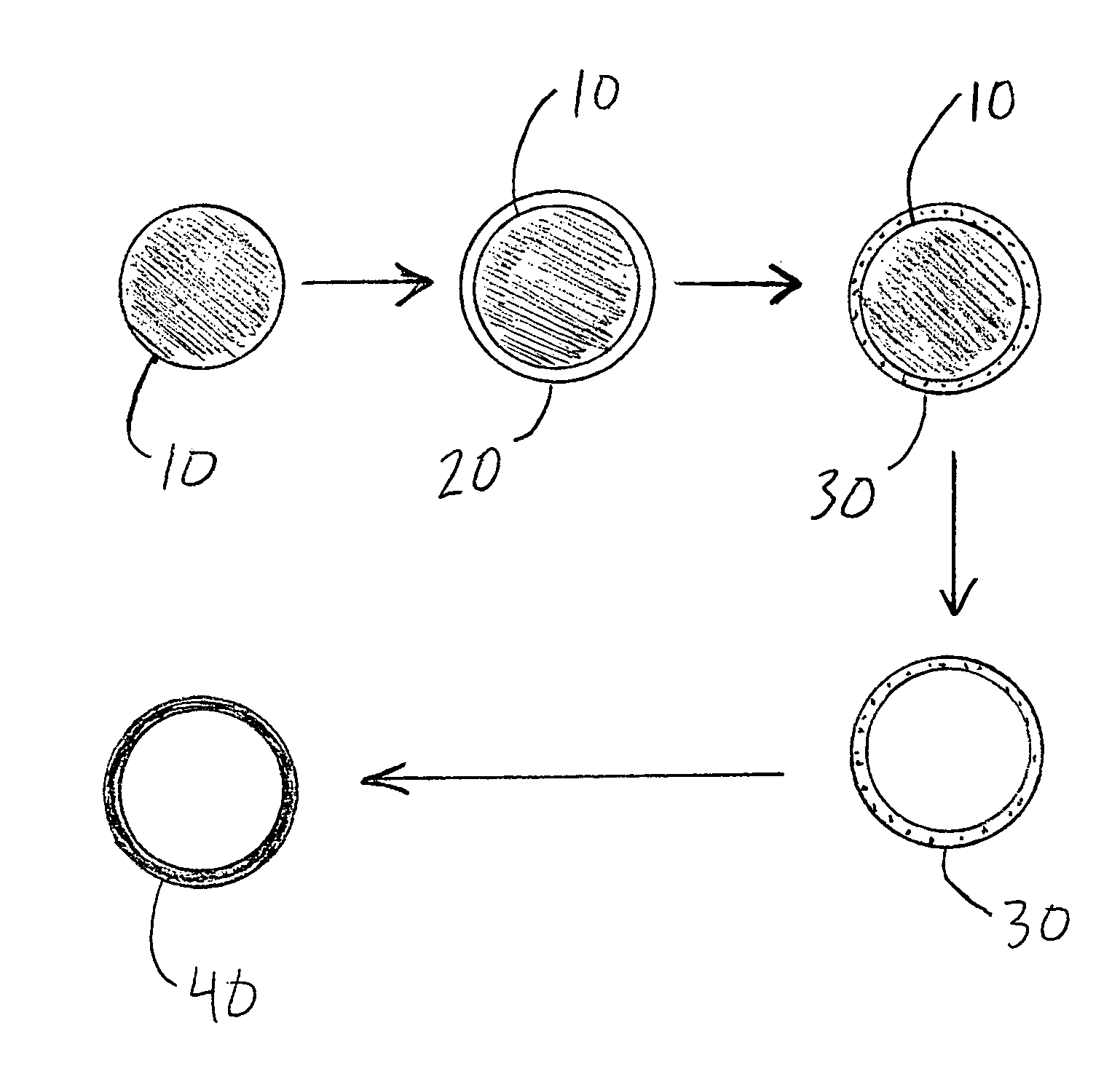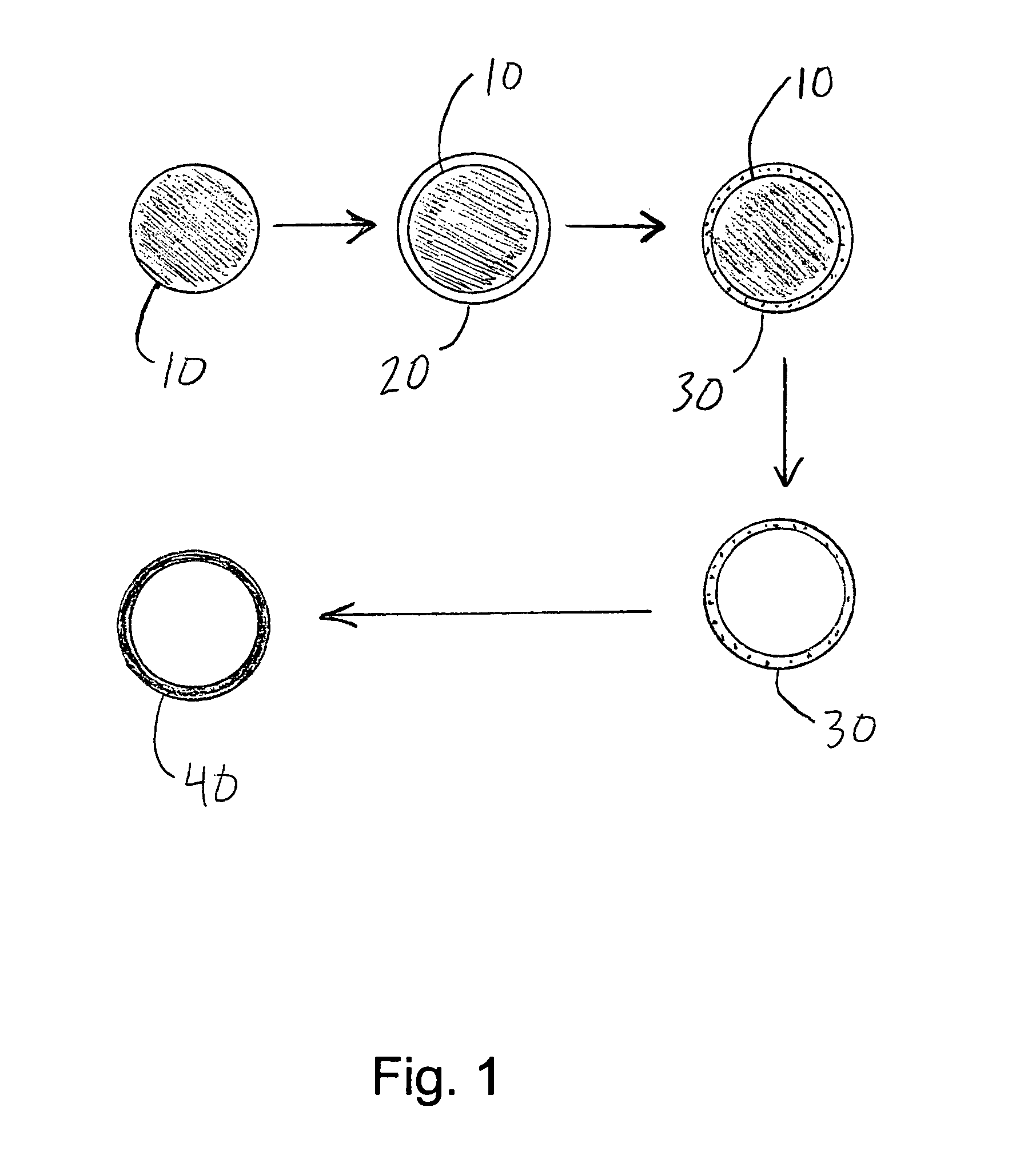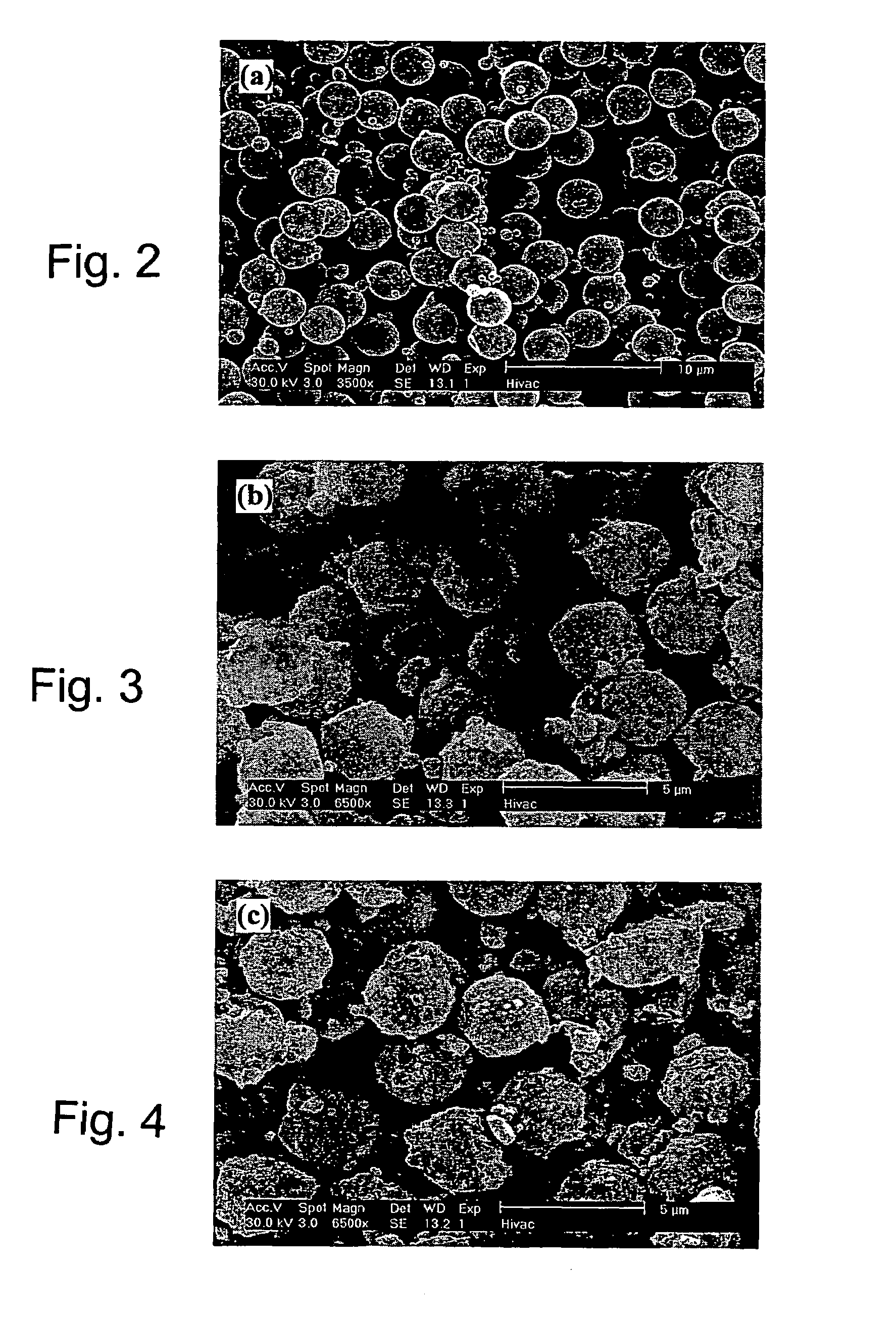Production method of high strength polycrystalline ceramic spheres
a production method and polycrystalline ceramic technology, applied in the direction of synthetic resin layered products, natural mineral layered products, wellbore/well accessories, etc., can solve the problems of small changes in porosity or pore size, pore size, and inability to provide uniform coating of individual particles, etc., to achieve excellent mechanical strength and tolerance to solvents
- Summary
- Abstract
- Description
- Claims
- Application Information
AI Technical Summary
Benefits of technology
Problems solved by technology
Method used
Image
Examples
examples
Hollow Spheres
[0038]An acetate-alumoxane (A-alumoxane) (not shown) was prepared according to the method described in Chem. Mater. 9 (1997) 2418 by R. L. Callender, C. J. Harlan, N. M. Shapiro, C. D. Jones, D. L. Callahan, M. R. Wiesner, R. Cook, and A. R. Barron, which is incorporated herein by reference. Aqueous solutions of alumoxane were then degassed before use. Dry-form polystyrene beads 10, such as those available from Polysciences, Inc. and shown in FIG. 2, were preferably used. Beads of polymers other than polystyrene may be used, so long as the polymer is soluble in a solvent. Likewise, beads of other materials may be used, so long as they are soluble in a solvent that will not damage the alumoxane coating.
[0039]Beads 10 were then coated with the aqueous solution of A-alumoxane, as shown in the SEM image in FIG. 3. The aqueous solution of A-alumoxane may range from 1-10 weight percent. The aqueous solution of A-alumoxane more preferably ranges from 2-8 weight percent, and m...
PUM
| Property | Measurement | Unit |
|---|---|---|
| diameter | aaaaa | aaaaa |
| temperature | aaaaa | aaaaa |
| temperature | aaaaa | aaaaa |
Abstract
Description
Claims
Application Information
 Login to View More
Login to View More - R&D
- Intellectual Property
- Life Sciences
- Materials
- Tech Scout
- Unparalleled Data Quality
- Higher Quality Content
- 60% Fewer Hallucinations
Browse by: Latest US Patents, China's latest patents, Technical Efficacy Thesaurus, Application Domain, Technology Topic, Popular Technical Reports.
© 2025 PatSnap. All rights reserved.Legal|Privacy policy|Modern Slavery Act Transparency Statement|Sitemap|About US| Contact US: help@patsnap.com



